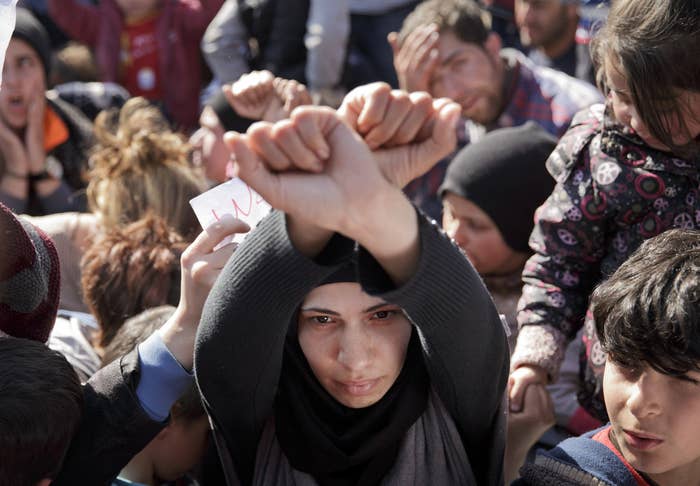
If we're to measure the scale of the refugee crisis by how many people are coming to European shores, it is as enormous as ever. The number of refugees who have crossed the Mediterranean in 2016 so far is fast approaching the figure for the entire first half of 2015, according to the UN High Commissioner for Refugees, prompting the refugee agency to describe Europe as being on the brink of a "self-induced humanitarian crisis".
The majority of refugees continue to be Syrians, with Afghans and Iraqis accounting for the next-largest proportion of asylum-seekers. Most fleeing from their war-torn countries are still risking their lives trying to reach Europe: More than 100,000 migrants and refugees have crossed the Aegean Sea from Turkey to Greece in 2016 so far, according to the International Organization for Migration. Over the weekend, 25 refugees drowned on the route, including 13 children, in a tragic event that has become an almost daily occurrence for refugees travelling in unsafe dinghy boats.
After reaching Greece's shores, refugees on the route towards western Europe face blocked borders, harsh weather conditions, and imprisonment. At the end of last month, Macedonia tightened its border, allowing only a few hundred to pass through from Greece each day and leaving tens of thousands of people living in crowded conditions and stuck behind barbed-wire fences. Authorities now estimate more than 36,000 refugees and migrants are currently in Greece, with about 2,000 refugees arriving daily from Turkey.
Even if refugees make it to western Europe to set up a new life, the mood towards many has been far from welcoming. Assaults on refugees in Germany and mob-like attacks in Sweden have been reported, and hostility has only been heightened by negative, fake news stories that have fuelled anti-refugee sentiment. Meanwhile, in Calais, northern France, refugee shelters are being flattened.
But by far one of the most noticeable developments in 2016 is that, for the first time since the refugee and migrant crisis erupted in Europe, the women and children crossing the continent outnumber the men. Last year, men were sent first to carve out the route, arrive in a country, and kick-start their families' new lives by earning money and finding a home. Now, women and children are following them over. The Council of Europe's Commissioner for Human Rights says 60% of refugees on the journey today are women and children.
So how did it get to this point? And what are EU leaders doing to help the refugee problem in Europe?
BuzzFeed News has (some of) your questions answered.
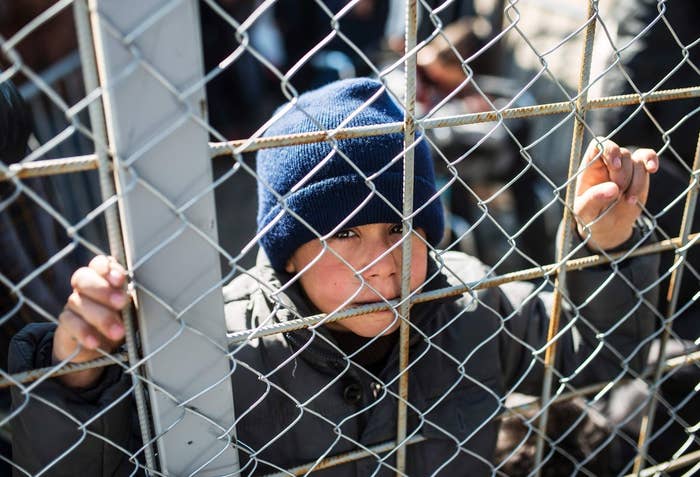
The refugee crisis appears to be at a boiling point in Greece. What exactly is happening there?
Greece is grappling with two crises: an economic, home-grown one that has thrown the country into financial turmoil, and a refugee one that has been forced upon them by the rest of Europe, the worst of its kind in the region since World War II.
As the first point of entry to Europe for the majority of refugees, Greece used to be a transit country, one to pass through before they'd reach popular destinations like Germany or Sweden. But in recent weeks, Greece has – against its will – shifted towards becoming a host country.
Around 12,000 refugees are living in Idomeni in several makeshift camps, a semi-permanent setup for those who still intend to cross tightly controlled borders towards western Europe. Rising tensions between police and refugees on the border have recently prompted clashes, with tear gas and batons being used by police to disperse crowds.
Meanwhile, charities have said refugees camping in the region are experiencing "deteriorating" health due to poor hygiene conditions and worsening weather, especially for women and children, who make up at least 55% of those on the border.
Unable to move forward and cross the Greece–Macedonia border, and hesitant to turn back to Turkey across the sea, where most risked their lives crossing unsafe waters on wooden boats or dinghies, refugees in Greece are now essentially trapped.
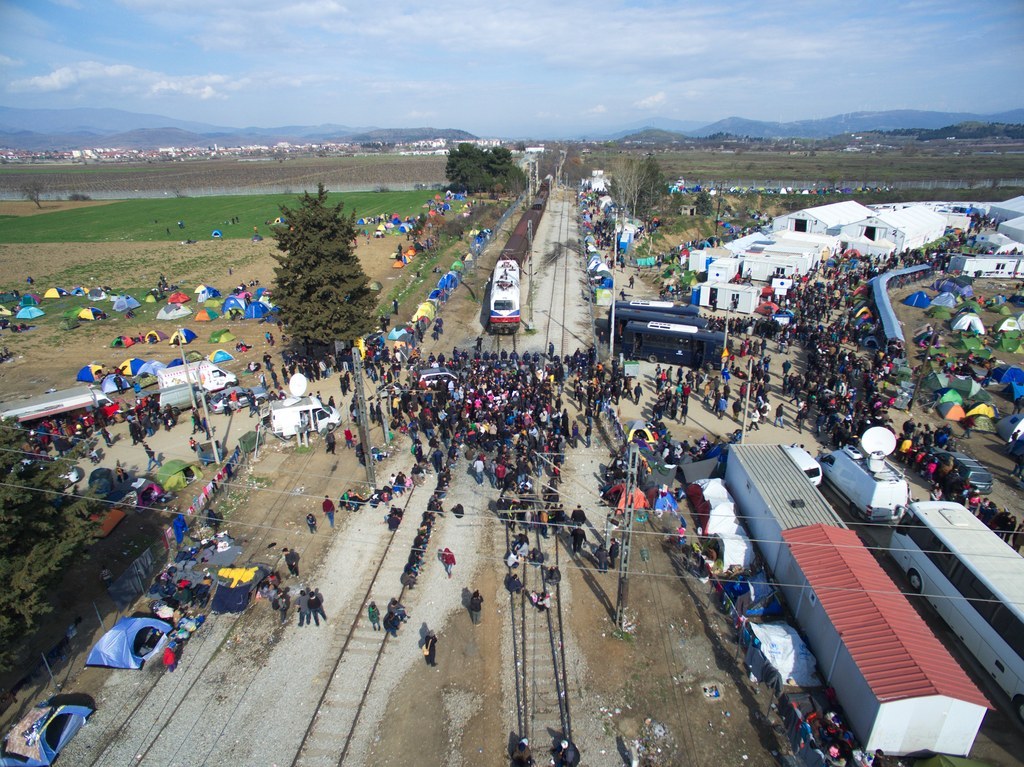
How are European leaders attempting to manage the refugee crisis?
By talking a lot.
On Monday, Turkish and EU leaders gathered in Brussels for an emergency summit to discuss further ways in which they can slow – and then stop – refugee arrivals and solve the deepening crisis.
After 12 hours of talks on Monday, a slightly more concrete plan to return thousands of refugees to Turkey was decided upon. The idea, they say, would be to resettle one Syrian refugee in Europe for every Syrian returned to Turkey from Greece. The deal would apply only to Syrians, not Iraqis, Afghans, or anyone from other countries embroiled in war.
The decision hasn't been finalised, and it was met with criticism by some officials who questioned whether it was possible to implement. The EU leaders are due to reconvene in one week's time for a two-day summit where they hope to finalise a deal.
Prior to the meeting, two "solutions" to stem the flow of refugees were proposed by Donald Tusk, the president of the European Council: the closure of the Balkans route (through Macedonia, Serbia, Croatia, and Slovenia, one that has been taken by hundreds of thousands of refugees in the last year), and the request for Turkey to "take back" refugees.
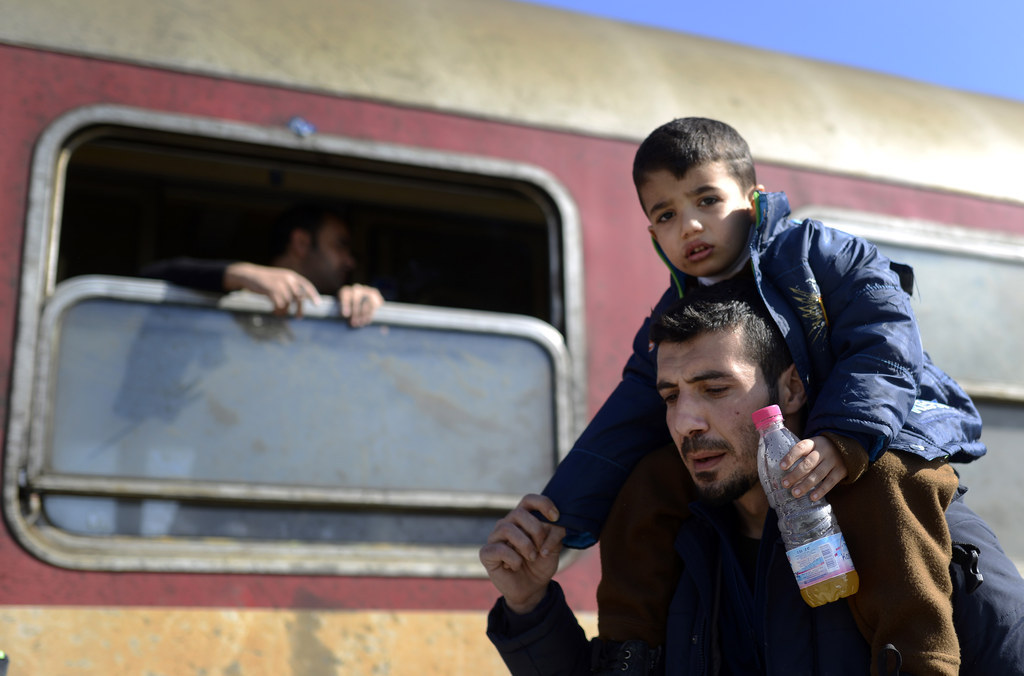
I see, so they want to send refugees back to Turkey – what are the problems there?
As the EU has already noted, returning refugees to Turkey poses a logistical challenge as well as a legal one.
Some questioned how authorities will be able to register refugees to assess whether they are "in need of international protection", when they've struggled to properly register those passing through Europe already. Then, if they plan to transport refugees back to Turkey across the same waters they risked their lives to cross – waters that are now patrolled by NATO and British forces – will they be able to do so at the necessary speed to balance out the huge numbers still arriving (2,000 a day) on Greek shores?
The idea to return refugees from Greece to Turkey has been criticised by human rights organisations, who say denying people fleeing danger the right to seek asylum would be illegal. The EU has also been accused of overlooking human rights abuses in Turkey in its pursuit of securing a deal.
Turkey hopes its cooperation with the EU will work in its favour when it comes to talks on its possible membership of the union. It is still unclear whether or not Turkey, which is already host to several million Syrian refugees, is prepared for such a proposal – even after it's granted the €3 billion ($3.3 billion) it has requested to help shelter Syrians.
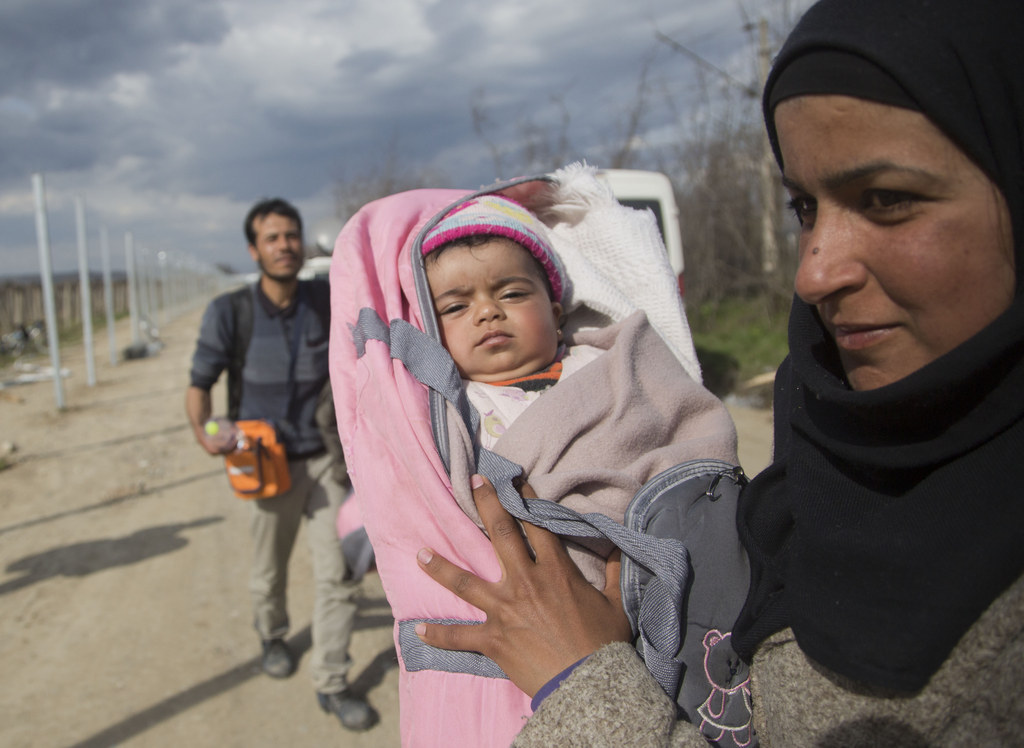
OK, but what about the Macedonian-Greek border that remains shut? If they close the Balkans entirely, as the EU suggested, will that help to slow down refugee arrivals?
As with most "solutions" put forward by EU leaders in recent months, the proposals are short-term and difficult to carry out in practice, and fail to address humanitarian issues.
For months, EU leaders stressed their hardline approaches to slowing the number of refugee arrivals: closure of borders, additional police patrolling entry points, the removal of camps, detention, and deportation. They were largely "quick fix" solutions that focused on the frontline issues faced, with little being done to address the true enormity of the problem and the desperate need to relocate refugees.
The numbers today show that, despite the best efforts of Europe's governments, attempting to stem the flow of refugees by merely pushing them further away from western Europe has been an unfeasible task. As of the end of last month, 131,724 refugees and migrants had arrived in Europe in 2016. Today that figure is fast approaching the total arrivals in Europe during the first six months of 2015 (147,209). These numbers don't appear to be slowing down.
With this in mind, it's unlikely the possible Balkans closure will change that fact. When Hungary closed its border, refugees carved out a new route through Croatia instead. It's not unrealistic to expect refugees will find a new way over any wall built in their path; their drive to flee war and poverty at home is far stronger than the fear of a closed border.
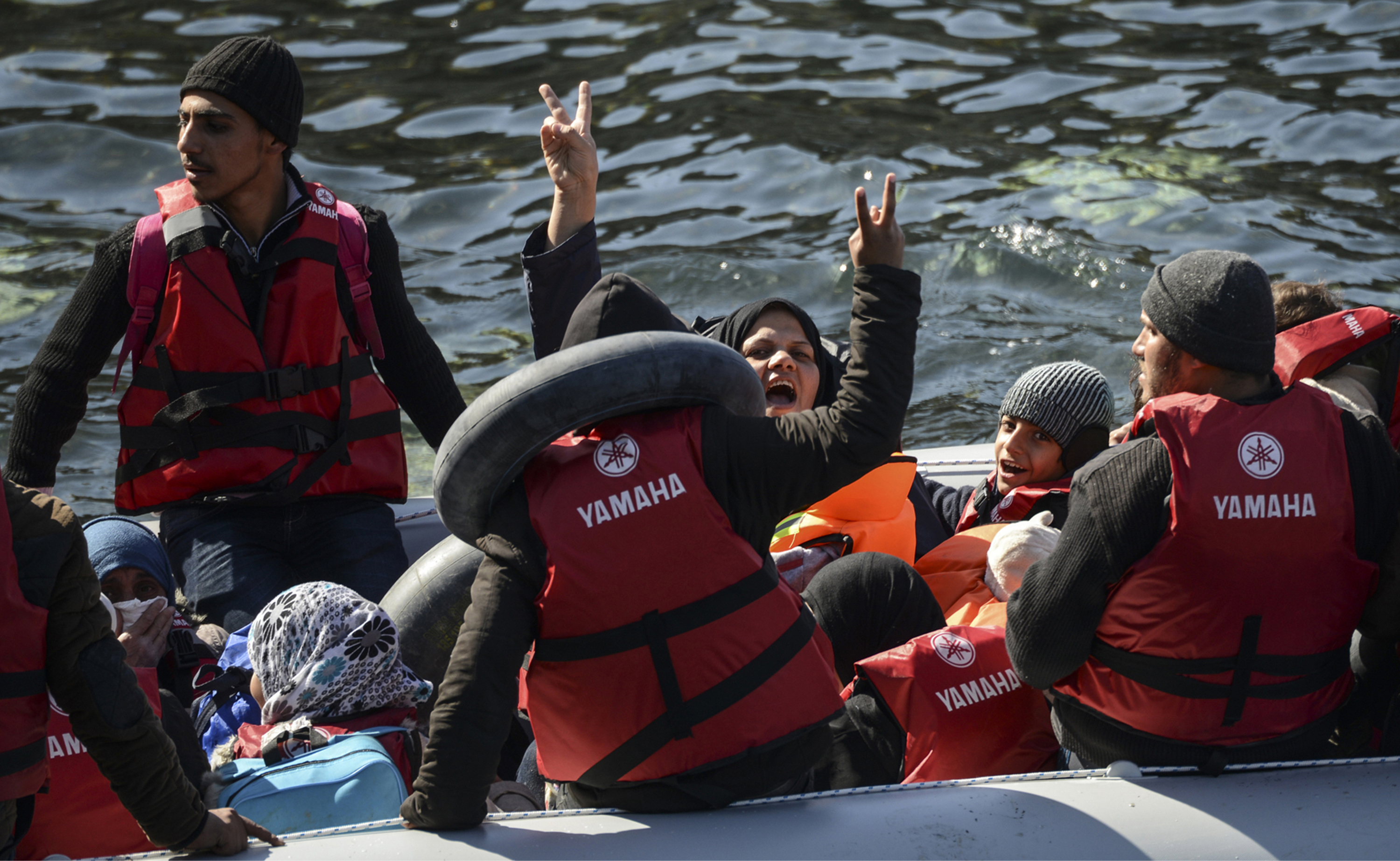
This doesn't sound too great for Europe. Are there any long-term plans that could help?
Last week, the UNHCR outlined long-term solutions to help the disproportionate burden some countries are facing compared with others. The relocation measures that Europe agreed to in 2015, it stressed, need to be prioritised and implemented. The refugee agency also highlighted "inconsistent practices" that are causing "unnecessary suffering" and risk violating EU and international law.
Right now, although the whole of Europe is entangled in the refugee crisis, Greece remains the focal point. Of the 66,400 refugees European leaders agreed to relocate from Greece, only 325 have actually been moved elsewhere.
As Greece's neighbours fail to take the necessary steps to accept or relocate arrivals, the country's financial and social stability, as well as its morale, will undoubtedly worsen. As for the many thousands of refugees there, penned in by barbed wire on one side and patrolled by NATO boats on the other, they'll remain in makeshift camps across the country for the time being, awaiting the next decision from the EU that will dictate their fate.

